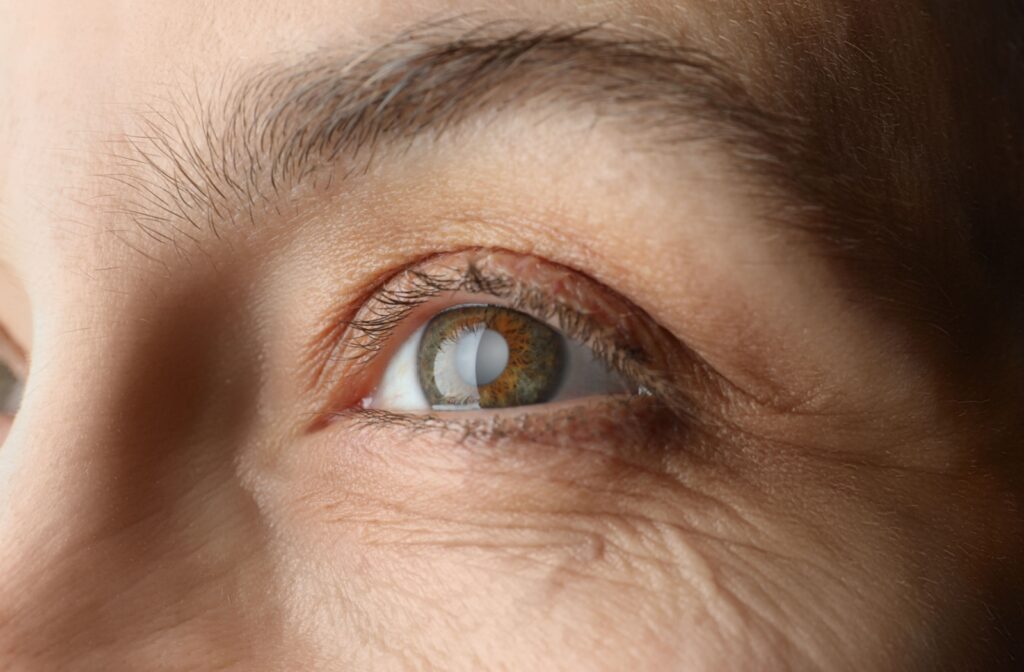Cataracts are one of the most common eye conditions, particularly as we age. They affect many people’s vision care worldwide and are a leading cause of vision impairment, especially for seniors. Living with cataracts can drastically impact your daily life, but identifying the symptoms early can lead to effective treatment. For those wondering, “What do cataracts look like?” or “How do cataracts affect vision?”, this guide breaks everything down for you.
Whether you’re experiencing blurred vision, dull colors, or trouble seeing at night, understanding cataracts and their symptoms is the first step to getting help.
What Are Cataracts?
A cataract occurs when the lens of your eye—normally clear—becomes clouded. This cloudy lens scatters light, which can make things appear blurry, hazy, or less vibrant. Cataracts develop slowly over time, so you might not notice symptoms immediately. However, they often become more pronounced as they progress.
Cataracts are most commonly associated with aging, but other risk factors include:
- Diabetes
- Extended exposure to UV light
- Smoking
- Family history of cataracts
- Eye injuries or surgeries
According to the National Eye Institute, more than half of Americans either have a cataract or have had cataract surgery by the time they turn 80.
What Do Cataracts Look Like?
From an external perspective, cataracts can sometimes be visible as a milky or whitish discoloration in the pupil. However, many cataracts are too small or faint to notice without professional evaluation during an eye exam.
From your internal vision perspective, cataracts can feel like:
- Blurry or foggy vision: It’s as if you’re looking through a fogged-up window.
- Dimmed colors: Colors may start to look dull, faded, or less vibrant.
- Halos around lights: You might notice halos or a ring of light around sources like headlights or streetlights, which can make driving at night challenging.
- Increasing sensitivity to light: Bright sunlight or indoor lighting may become uncomfortable or appear glaring.
- Double vision in one eye, which can happen with advanced cataracts.
- Difficulty seeing at night: Low-light conditions can make it harder to perceive shapes and objects clearly.
If these descriptions sound familiar, it’s time to schedule an eye exam to assess your eye health.
Cataract Symptoms to Look Out For
Early detection is essential. Cataract symptoms often develop slowly, so many people don’t notice changes in their vision right away. Some common symptoms include:
- Gradual Blurring of vision that glasses no longer seem to correct.
- Frequent Prescription Changes in glasses or contact lenses.
- Loss of Depth Perception, making steps or uneven surfaces harder to see.
- Difficulty Reading small or fine print even with corrective lenses.
Recognizing these signs early allows your eye doctor to recommend the best course of action.

Can Cataracts Be Treated?
Yes! Cataracts can be treated with surgery, which is considered one of the safest and most effective procedures available today. During this quick and relatively painless procedure, the clouded lens of your eye is carefully removed and replaced with an artificial intraocular lens (IOL). This new lens restores clear vision, allowing patients to return to their daily activities with improved sight. The surgery is typically performed on an outpatient basis and has a high success rate.
Mild Cataract Treatment
For those with mild cataracts, surgery may not be immediately necessary. In such cases, your eye doctor might suggest non-surgical options to help manage the symptoms. These could include stronger prescription glasses to enhance your vision, magnifying lenses to assist with reading or close-up work, or brighter lighting in your environment to reduce glare and improve visibility.
While these adjustments won’t cure cataracts, they can make it easier to cope with the condition until surgery becomes the best option. Regular checkups with your eye doctor will help determine the right time to consider surgical intervention.
Protect Your Vision from Cataracts
While cataracts are often linked to aging, there are steps you can take to slow their progression:
- Wear sunglasses that block 100% of UV rays to protect your eyes from sun damage.
- Quit smoking, which is linked to a higher risk of cataract development.
- Manage chronic conditions like diabetes by monitoring your blood sugar levels.
- Eat a healthy diet rich in antioxidants found in leafy greens, fruits, and vegetables.
- Get regular eye exams, especially if you’re over 60 or have a family history of cataracts.
Your eyes play such an essential role in your quality of life that protecting them should always be a priority.
How Total Vision La Quinta Can Help
If you’re dealing with cataract symptoms or considering cataract surgery, professional eye care can make all the difference. At Total Vision La Quinta, we offer comprehensive eye exams to detect cataracts early and guide you through treatment options. Our experienced team in La Quinta, CA, is here to help safeguard your vision for years to come.
Don’t wait for symptoms to worsen—take the proactive step toward clearer vision today.
Book your appointment now or call us to schedule your visit.
Your eyes deserve expert care, and we’re here to provide it! Whether it’s cataract management or general eye health needs, we are ready to help you look better, feel better, and see better!



